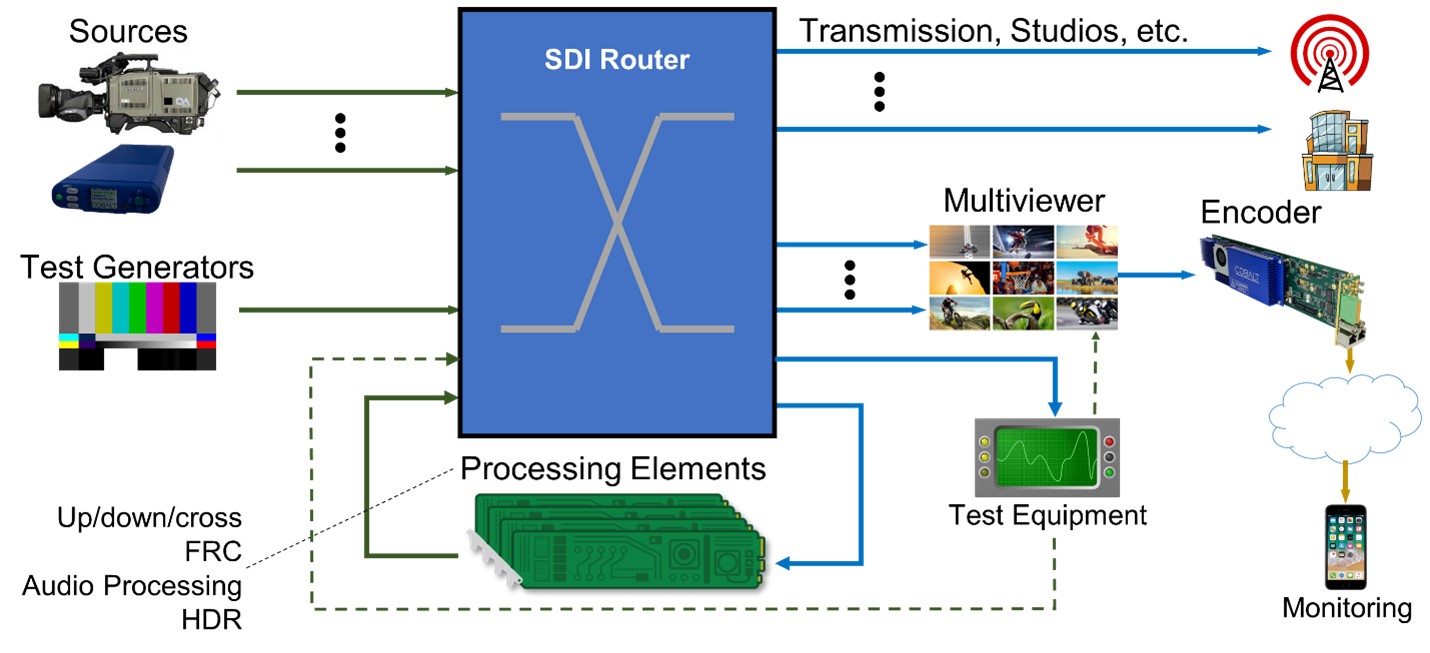A Control Room in Your Living Room…

If you think back over the past 18 months, given the turmoil that communities and businesses across the world have experienced, it’s quite incredible how well - and how quickly - industries have adapted. When COVID-19 forced millions of people into lockdown, television content became a lifeline. Broadcasters, who like many others, were adapting to ‘at home working’, were faced with enormous pressure – to not only continue to produce, manage and distribute content remotely - but to embrace these new working methods. And that’s exactly what they did.
This unprecedented situation meant that operators needed to be able to control the head-end and see results from afar, in real-time. This required low-latency, high-quality contribution-grade audio/video content to be transmitted over the Internet and monitored using consumer-grade devices such as phones, tablets and computers.
To do this they needed solutions for all the actions and functions performed by a local operator. This meant that equipment had to be remotely configured and monitored; real-time operation was essential; they had to be able to view content using a consumer-grade device; and additional functions had to be available to be added to a video path, for example, if an SDR feed is being ingested into an HDR workflow, it needs to be inverse tone mapped to HDR. Finally, they had to be able to bring in test equipment in the event of any issues.
All of these functions are already available in one way or another, and by carefully designing the head-end and following the steps below, you can make all of this happen today.
- Remotely configure equipment: Once the device has a network connection, it doesn’t matter if it’s in the same room as the operator or on the other side of the planet. Most devices today are configured through a network.
- Remotely watch video with very low latency: Cobalt encoders, such as the 9992-ENC and the 9223, support the Reliable Internet Stream Transport (RIST) specification natively. The same is true for our decoders, including the 9992-DEC and the 9990-DEC. Our 9992 compression line also includes low latency modes, where the intrinsic compression latency is minimized.
- Make content available to consumer-grade devices: Virtually all consumer-grade devices support the HTTP Live Streaming (HLS) protocol. All Cobalt encoders have native support for HLS. Content can be served directly from the encoder itself using a built-in web server or pushed into an external web server to support a larger number of devices. Also, multi-viewers can be used upstream of the encoder to generate a mosaic comprised of a number of sources, allowing for simpler monitoring. The Cobalt 9971 multi-viewer is an ideal device for this purpose.
- Adding functions to the video path: The “core” of the head-end should be a video router of sufficient capacity. All the incoming feeds terminate into this router, and all the outgoing feeds emanate from this router. This can be an SDI router for head-ends that use baseband SDI, or a large switch for head-ends based on SMPTE 2110 flows. For SDI signals, our 9942-RTR router is a good option. Now, if you connect processing devices to your router, you can bring them on the signal path as needed. One good example of such processing device is our 9904-UDX-4K card.
- Test and measurement: Devices either generate a test signal to be fed to a path that needs to be verified, and/or receive and analyze an incoming signal. By connecting test generators and analyzers respectively to inputs and outputs of the video router, these devices can also be brought online as needed. We offer the 9960-TG2-REF1, which is capable of providing two simultaneous video test signals, as well as audio test tones. Our 9978-ANC-MON ancillary data monitor is a good option for signal monitoring.
The Reliable Internet Stream Transport (RIST), which we’ll be highlighting in a blog coming soon, is the industry-standard protocol for low-latency, high-quality video. RIST is an integral part of a remote head-end, and is available in all Cobalt encoders and decoders.
For monitoring-grade video, the most common protocol available in consumer-grade devices is HLS, which can be served off a standard unmodified web server. Many encoders with HLS support have a built-in web server, which simplifies deployment (as long as the number of clients is not too large). HLS represents a good compromise between ease-of-use and latency.
If a remote operator needs to have local equipment to monitor the signals our BBG-1300-FR enclosure can take many of the existing Cobalt openGear cards into a portable chassis. This may be especially important when receiving a contribution-grade signal over the Internet using RIST.
If you’d like more information about the topics discussed in this blog contact us today.